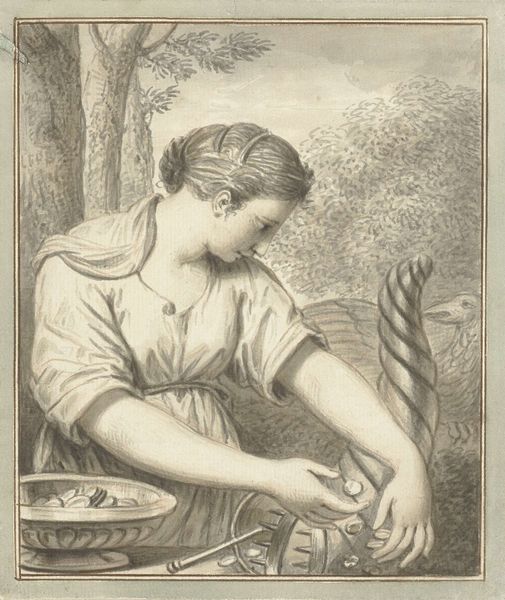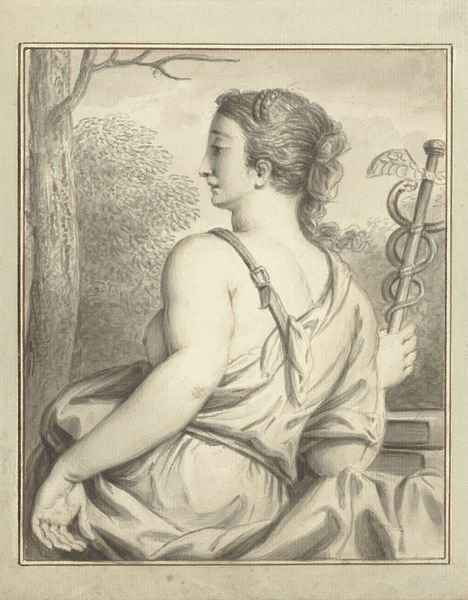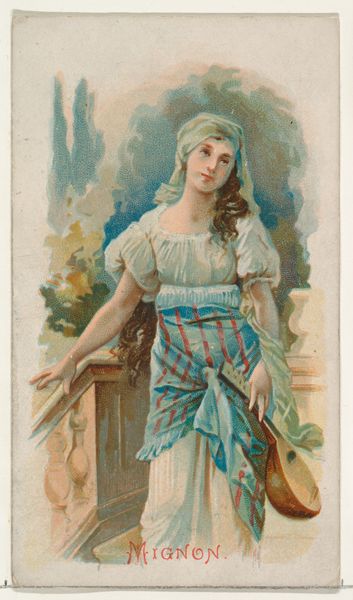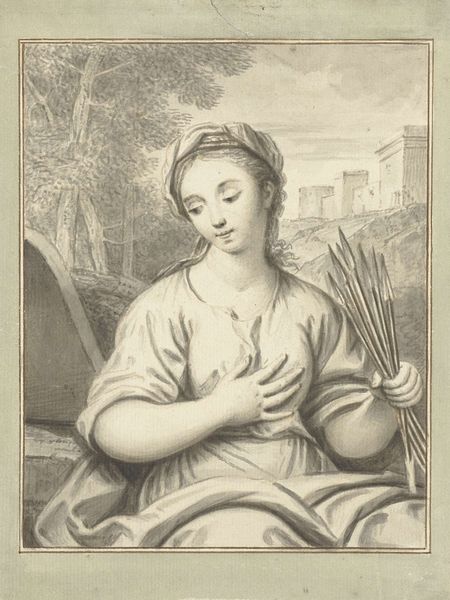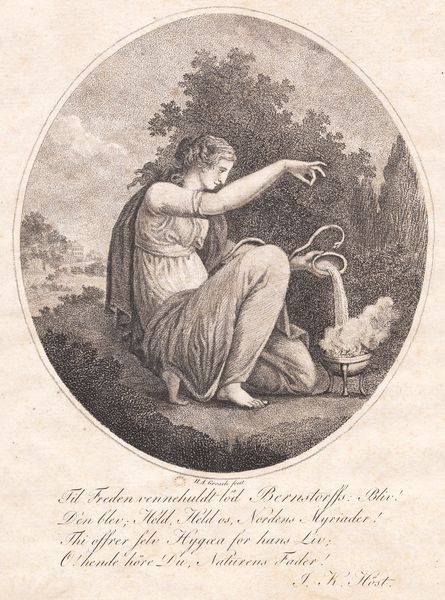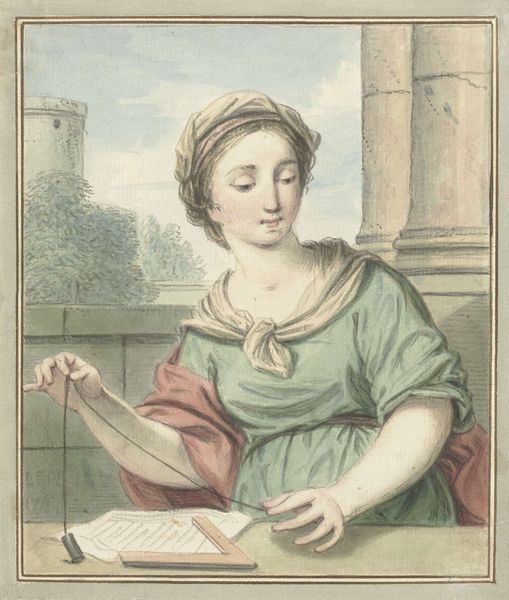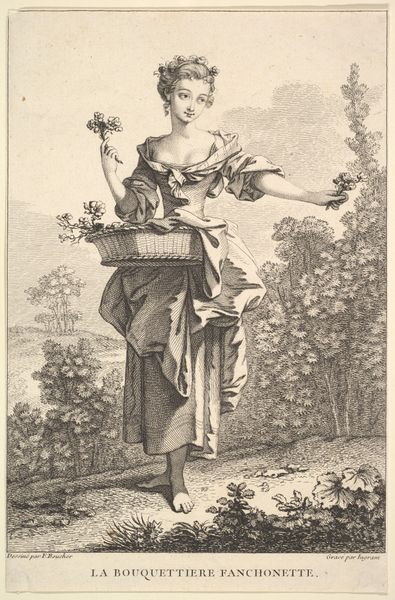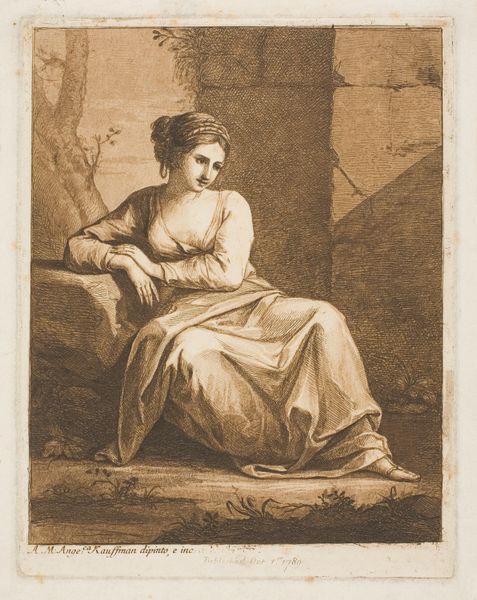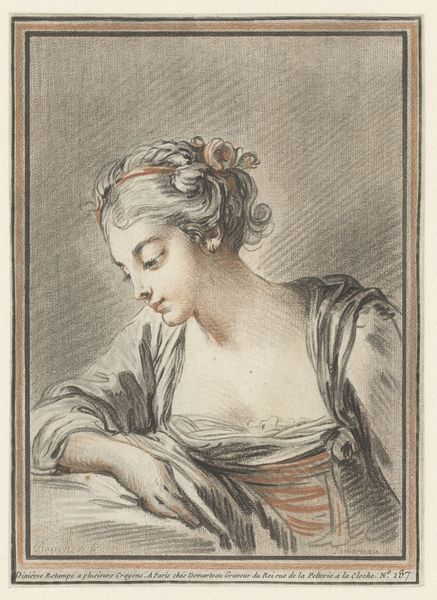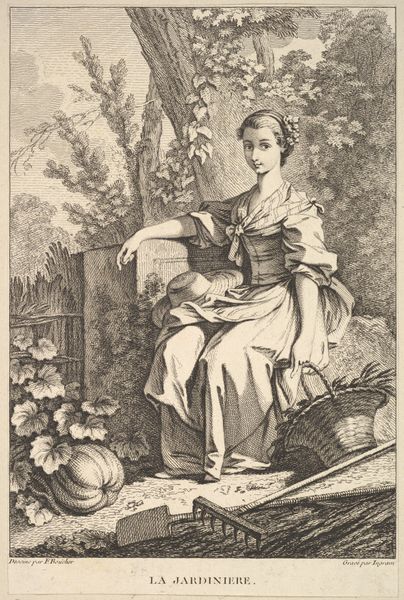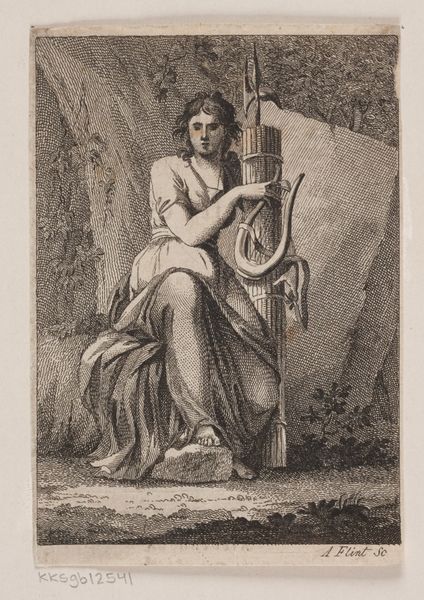
painting, watercolor
#
portrait
#
painting
#
figuration
#
watercolor
#
genre-painting
#
watercolor
#
rococo
Dimensions: height 171 mm, width 137 mm
Copyright: Rijks Museum: Open Domain
Editor: This watercolor painting, "De Zeevaart" from 1743 by Louis Fabritius Dubourg, depicts a woman with what looks like drafting or navigational tools. The colors are so delicate. How would you interpret this work? Curator: From a materialist perspective, let’s look beyond the immediate subject. The use of watercolor itself is significant. In the 18th century, watercolor was increasingly linked to amateur production, often associated with women and the burgeoning middle class. Does this soften the potential authority the "navigation" theme implies? Editor: That's a good point. It complicates a straightforward reading. What do you mean by the use of "navigation?" Curator: Notice how the tools reference navigation and trade. But watercolor was a trade commodity, globally sourced. Its pigments often derived from mined minerals and processed in workshops. The image speaks to globalized commerce, the raw material acquisition, manufacturing processes and how it has influenced the construction of feminine identity. Editor: So, are you suggesting the act of making the image connects the artist and the sitter to a network of labour and resource extraction? Curator: Precisely. Rococo, typically thought of for ornamentation and delicacy, is shown as reliant on larger economic processes that are both labour and materials focused. Think about how such things like silk or exotic dyestuffs from colonies would be important in the overall Rococo material culture of trade with far reaching sources for the production of luxurious life, and the production of art such as this piece. Editor: That really shifts my perspective. I initially saw only a pretty portrait, but now I see how the materials used and their origins open up the artwork to a whole world of commerce and labor! Curator: Exactly! And understanding these material and economic contexts enriches our understanding of not only the artwork but also the era in which it was created.
Comments
No comments
Be the first to comment and join the conversation on the ultimate creative platform.
